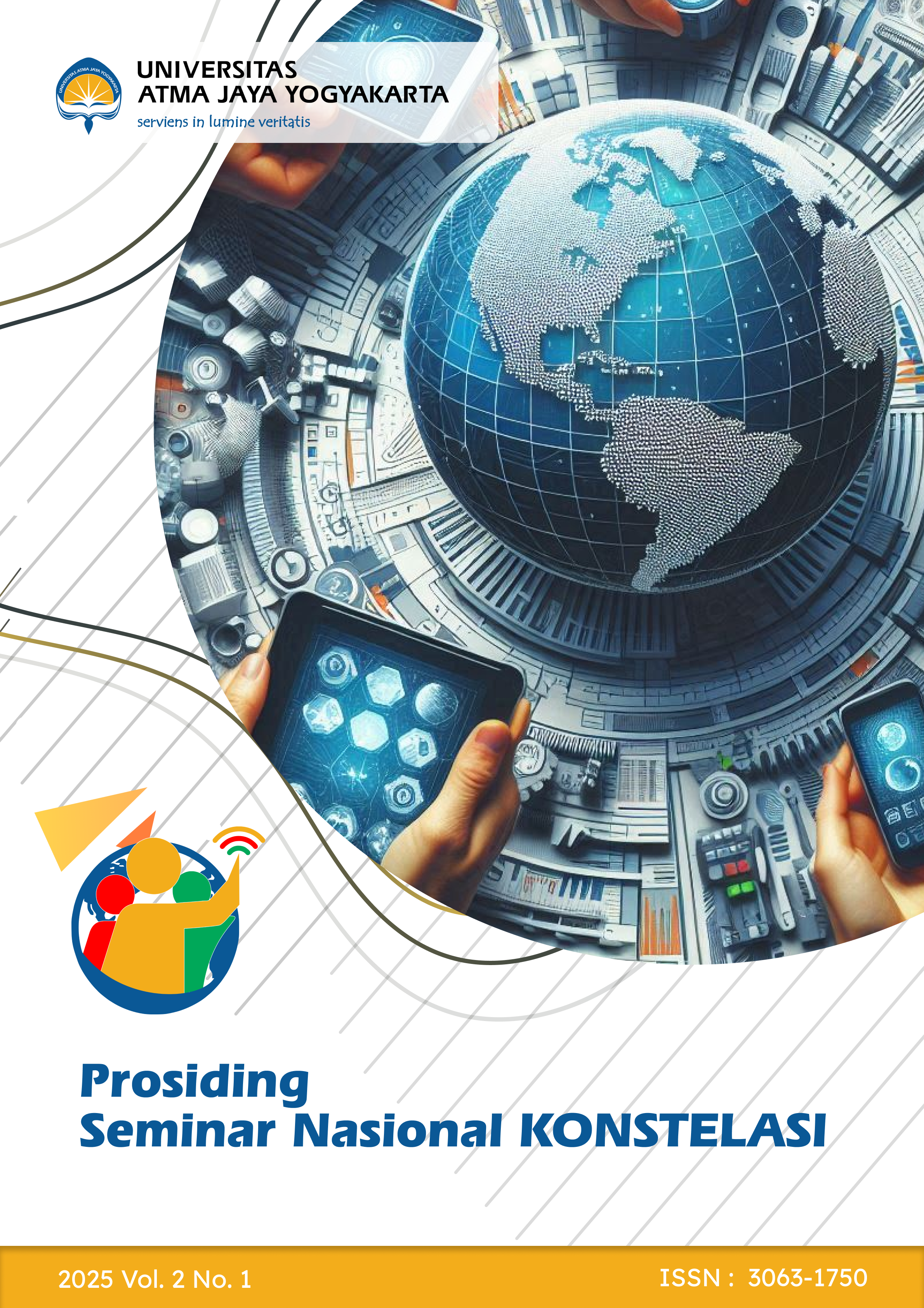Model Prediksi Keamanan Siber Menggunakan Artificial Intelligence untuk Mitigasi Ancaman Digital
-
DOI:
https://doi.org/10.24002/prosidingkonstelasi.v2i1.11246Keywords:
keamanan siber, kecerdasan buatan, machine learning, deteksi ancaman, ransomwareAbstract
Abstract. Cybersecurity has become a critical issue in the era of digital transformation, especially with the increasing threat of ransomware attacks targeting government digital infrastructure. This study develops an artificial intelligence-based cybersecurity prediction model to mitigate digital threats. The proposed model utilizes machine learning techniques to detect attack patterns based on historical datasets. This research analyzes the performance of several algorithms, including Random Forest, Support Vector Machine, and Deep Learning, to identify the most effective method for threat classification. The evaluation is conducted using accuracy, precision-recall, and F1-score metrics to measure model performance. Experimental results indicate that artificial intelligence-based approaches significantly enhance early ransomware attack detection, providing valuable insights for policymakers in strengthening cybersecurity resilience. These findings are expected to serve as a foundation for developing more adaptive and proactive cyber defense systems against future digital threats..
Abstrak. Keamanan siber menjadi isu krusial dalam era transformasi digital, terutama dengan meningkatnya ancaman serangan ransomware yang menargetkan infrastruktur digital pemerintah. Studi ini mengembangkan model prediksi keamanan siber berbasis kecerdasan buatan untuk mitigasi ancaman digital. Model yang diusulkan menggunakan teknik machine learning untuk mendeteksi pola serangan berdasarkan dataset historis. Penelitian ini menganalisis performa beberapa algoritma, termasuk Random Forest, Support Vector Machine, dan Deep Learning, untuk mengidentifikasi metode yang paling efektif dalam klasifikasi ancaman. Evaluasi dilakukan dengan menggunakan metrik akurasi, precision-recall, dan F1-score untuk mengukur kinerja model. Hasil eksperimen menunjukkan bahwa pendekatan berbasis kecerdasan buatan mampu meningkatkan deteksi dini serangan ransomware secara signifikan, sehingga memberikan wawasan bagi pengambil kebijakan dalam meningkatkan ketahanan sistem keamanan siber. Temuan ini diharapkan dapat menjadi landasan bagi pengembangan sistem pertahanan siber yang lebih adaptif dan proaktif dalam menghadapi ancaman digital di masa depan.
References
[1] L. Gupta, S. Chatterjee, and S. Chakraborty, “AI-driven cybersecurity: An overview, security intelligence, and future directions,” J. Inf. Secur. Appl., vol. 58, p. 102749, 2021, doi: 10.1016/j.jisa.2020.102749.
[2] R. Richardson and M. North, “Ransomware: Evolution, mitigation and prevention,” Int. J. Comput. Appl., vol. 179, no. 47, pp. 1–6, 2018, doi: 10.5120/ijca2018916783.
[3] M. Alazab, M. Tang, and S. Venkatraman, “Revealing the landscape of cyber threats and security incident response: A data-driven perspective,” Futur. Gener. Comput. Syst., vol. 94, pp. 187–208, 2019, doi: 10.1016/j.future.2018.11.001.
[4] R. Vinayakumar, M. Alazab, K. P. Soman, P. Poornachandran, and S. Venkatraman, “Deep learning approach for intelligent intrusion detection system,” IEEE Access, vol. 7, pp. 41525–41550, 2019, doi: 10.1109/ACCESS.2019.2895334.
[5] R. Kumar, A. Verma, and S. Prakash, “Deep learning-based anomaly detection in network security: A survey,” Comput. Secur., vol. 92, p. 101739, 2020, doi: 10.1016/j.cose.2020.101739.
[6] D. Sgandurra, L. Muñoz-González, R. Mohsen, and E. C. Lupu, “Automated malware analysis: Techniques, limitations, and open challenges,” ACM Comput. Surv., vol. 52, no. 4, pp. 1–40, 2019, doi: 10.1145/3329786.
[7] M. Conti, A. Gangwal, and S. Ruj, “On the economic impact of ransomware attacks,” IEEE Trans. Inf. Forensics Secur., vol. 16, pp. 3496–3508, 2021, doi: 10.1109/TIFS.2021.3094205.
[8] S. Sharma, P. Bedi, and A. Verma, “A novel AI-driven framework for adaptive cybersecurity measures,” Futur. Gener. Comput. Syst., vol. 106, pp. 345–359, 2020, doi: 10.1016/j.future.2019.12.002.
[9] C. Huang, X. Xu, and Q. Wu, “Challenges and opportunities in AI-driven cybersecurity,” ACM Comput. Surv., vol. 52, no. 5, pp. 1–25, 2019, doi: 10.1145/3359786.
[10] M. Nasr, R. Shokri, and A. Houmansadr, “Comprehensive survey on federated learning security and privacy,” IEEE Access, vol. 9, pp. 191559–191577, 2021, doi: 10.1109/ACCESS.2021.3118185.
[11] M. Taddeo and L. Floridi, “How AI can enhance cybersecurity,” Minds Mach., vol. 28, no. 4, pp. 661–674, 2018, doi: 10.1007/s11023-018-9475-4.
[12] Y. Wang, H. Liu, and J. Zhu, “Cybersecurity policy and AI governance: Challenges and solutions,” J. Cyber Policy, vol. 6, no. 2, pp. 145–163, 2021, doi: 10.1080/23738871.2021.1887546.








